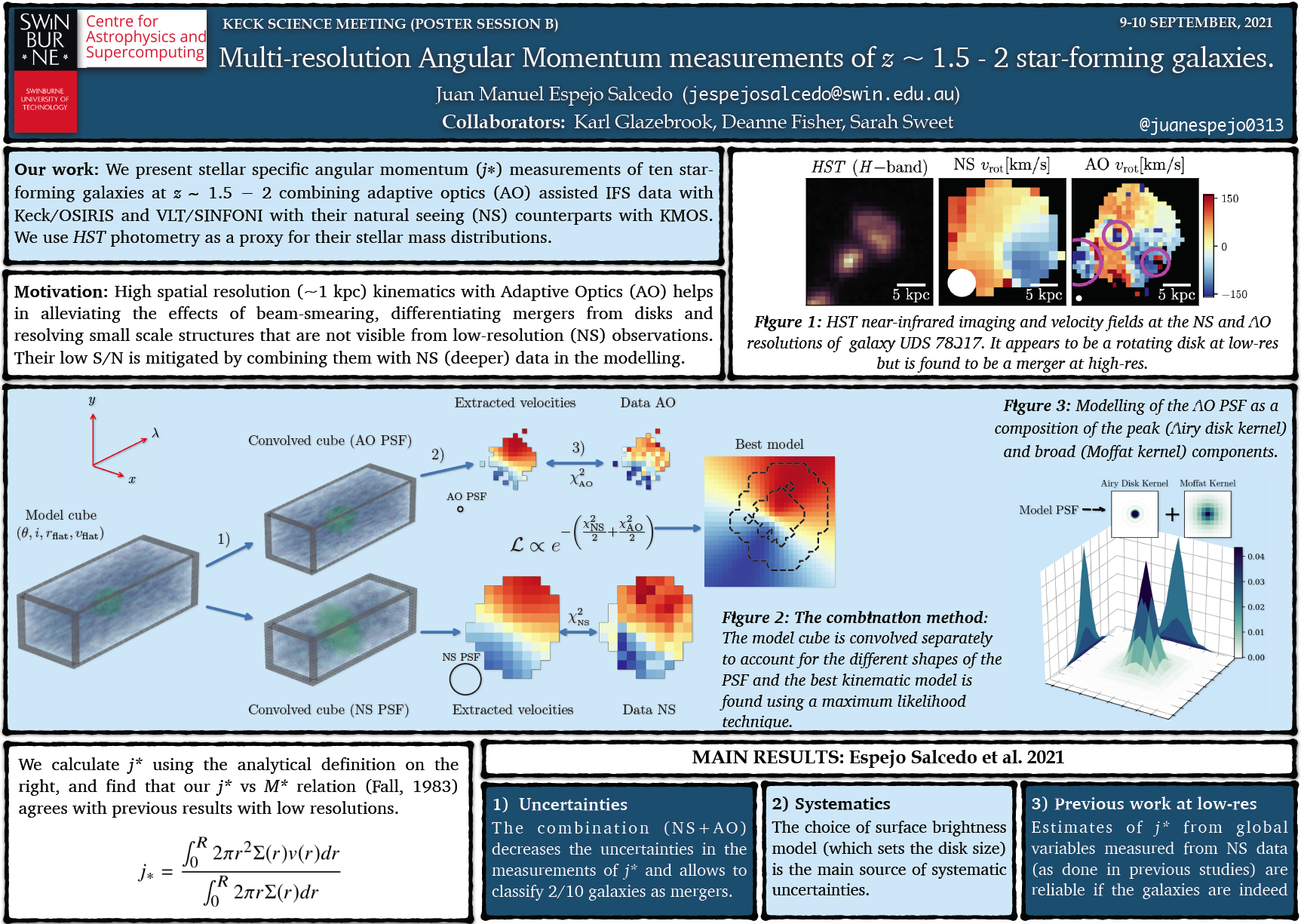My PhD project, under Karl Glazebrook and co-supervised by Deanne Fisher and Sarah Sweet is about the evolution of galaxy angular momentum through cosmic time. The galaxies I study are very far away (very faint), so we use data from some of the largest existing telescopes such as Keck, VLT and HST to measure their properties. In particular, I use high-resolution integral field spectrocopic (IFS) data obtained with adaptive optics to study their angular momentum content in detail.
Summary:
The main goal of my Ph.D. work is to study in detail the role that angular momentum plays in the evolution of star-forming galaxies from an observational perspective. This is motivated by the extensive evidence (from theory and observations) that both angular momentum (J) and gas fractions (fgas) play a fundamental role the evolution from young, gas rich, clumpy galaxies around the peak of star formation (z≈2) to the smoothly-structured rotating spirals we see today. In order to achieve this, I use data from some of the largest telescopes in the world to measure the angular momentum content of high-redshift galaxies in more detail than ever done before. The novelty of this work relies on the specific methods used to make these measurements more reliable.
With precise measurements of galaxy angular momentum I can test theoretical predictions where J and fgas are the main drivers of the stability of disk-like galaxies. At present, these predictions rely mostly on seeing limited observations which creates the necessity of high resolution kinematics (with adaptive optics) as well as their resolved molecular gas measurements for a direct comparison and a complete physical description. More specifically, in this thesis I will aim to:
• Study the importance of using adaptive optics assisted observations in high-redshift IFS kinematic studies and address the robustness of current measurements at z>1 from seeing limited surveys. This way I can identify any systematic bias and put the conclusions drawn from these surveys to the test.
• Investigate if the scatter in the M∗−j∗−β (where β is the bulge-to-total light ratio) plane is due to the resolution bias from seeing limited data or an erroneous morphological classification.
• Review the angular momentum evolution with cosmic time with the improved resolution.
• Determine if high gas fractions are enough to drive the clumpiness of galaxies, regardless of their angular momentum content.
Addressing the role of J in the evolution of star-forming galaxies will facilitate direct tests to galaxy evolution theory and simulation. Moreover, I will aim to determine which of the two fundamental aspects (gas content and kinematics) is empirically shown to bemore closely linked to the instabilities that drive (or are thought to drive) galaxy evolution around the epoch when star-formation peaks.
First Paper:
In the first paper ( link ), I am measuring the angular momentum of a sample of 10 galaxies by combining data at different spatial resolutions in order to increase the precision in the measurement. Below you can see a poster I presented at the Keck science meeting 2021 with the basics of the method employed in this work:
This work has been accepted for publication at MNRAS. Feel free to email me if you want to talk about this work at: jespejosalcedo@swin.edu.au.
